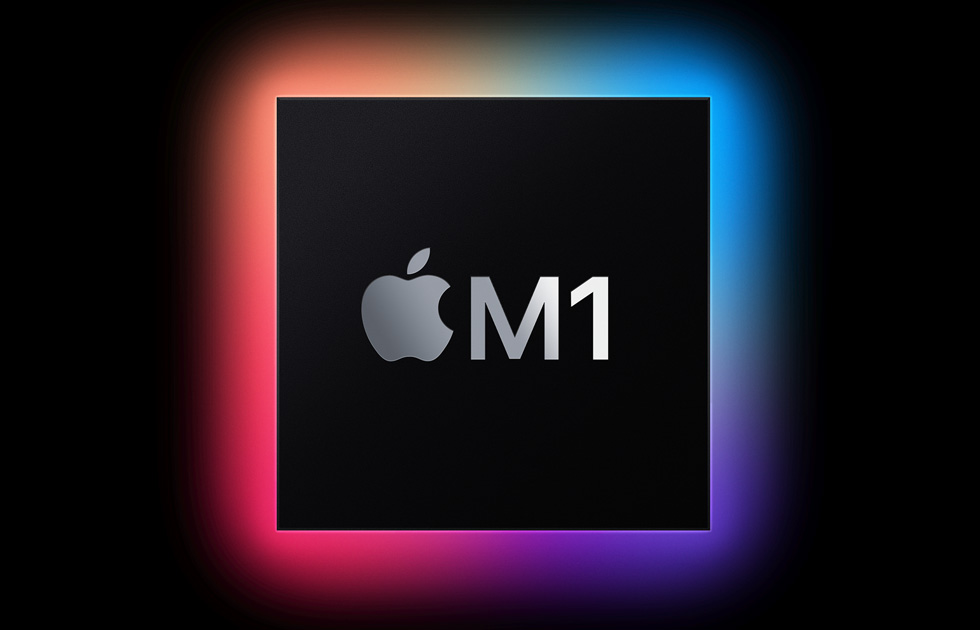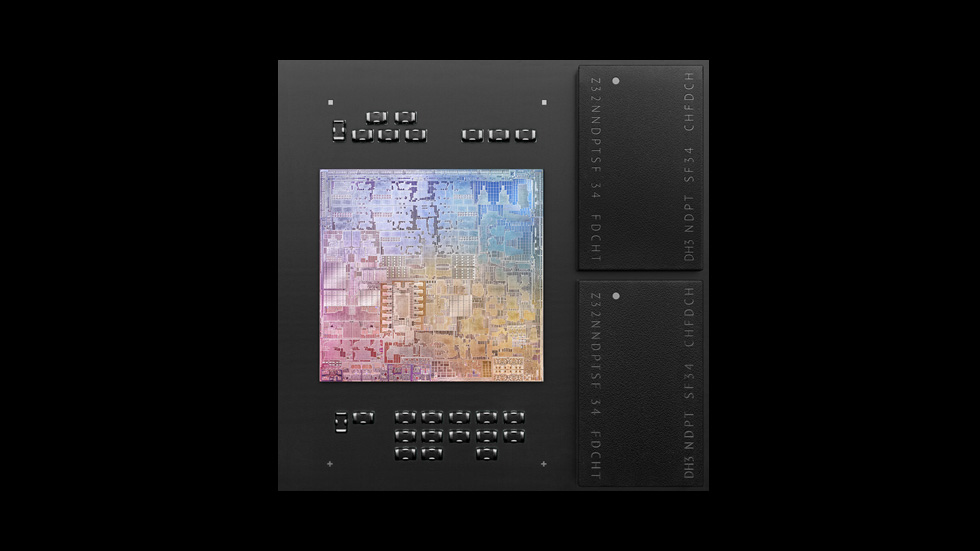
On November 11th, Apple held an online event, One more thing. Apple announced the new MacBook Air, Mac mini, and MacBook Pro with M1, a custom chip for Mac.
CEO Tim Cook first reintroduced the new products and services that Apple has announced in 2020, and then released a video that tells us that Mac users have innovated so far. Next, details of the M1, the first Apple Silicon, and M1-based Mac announcements were conducted.
The M1 has the potential to transform all Macs into a completely different product than ever, by dramatically increasing the performance per watt than the SoC used in the existing Mac. Until now, the processor, input/output, and security memory chips were separately installed on the Mac. However, in M1, it is possible to realize simple, efficient and excellent performance by integrating these technologies into one SoC.
The M1 also features an integrated memory architecture UMA. The M1 packs high bandwidth and low latency memory into one of its custom packages. As a result, all the technologies in the SoC can access the same data without copying between multiple memory pools, and the performance and power efficiency of the M1 chip have improved significantly.

The M1 chip is also the first PC chip made through a 5nm manufacturing process. Inside, 16 billion transistors were installed. The M1 CPU has 8 cores and is divided into 4 high performance and 4 high efficiency. Thanks to four high-performance cores, it boosts multithreaded workload performance, and comes with four high-efficiency cores for handling lighter workloads. It is said that the distribution between performance and power has reduced power to a tenth of the time. It is said that the high-efficiency core is efficient for light work, and this degree is equivalent to the current MacBook Air equipped with dual-core.
In addition, the M1 is equipped with a controller that determines where to execute code in real time for maximum performance and efficiency. Another important thing is to realize high performance with less power. According to Apple’s explanation, the M1 CPU is the world’s best in CPU performance per watt. It has up to twice the performance of the latest PC chips, but uses only a quarter of the power.
Apple is also designing a GPU that provides maximum graphics performance within the thermal design range of each product. It has up to 8 GPU cores and the M1 can handle 25,000 threads at a time. It supports from teraflops to texture bandwidth and fill rate. Graphics performance is twice that of conventional PC GPUs and power consumption is one-third.
The M1 chip is also equipped with a Neural Engine. With a 16-core design, it is possible to perform mass calculations of 11 trillion times per second. The entire M1 chip is designed to be excellent for machine learning, so it can perform tasks such as image analysis, voice recognition, and image processing that are not comparable to those of the Mac until now. It also incorporates a new generation of security features (Secure Enclave).
Apple emphasizes that the emergence of the M1 chip can provide tight integration between hardware and software in all Apple products, which is an important key to a good user experience. For the integration between hardware and software, Apple employed a dedicated Mac software workload to optimize the M1 architecture. If iOS and iPadOS make the most of the A-series chips, macOS Big Sur is developed to make the most of the M1.
In macOS Big Sur, for example, Safari runs 1.5 times faster JavaScript than now through the M1 chip and responds 1.9 times faster. The overall system performance has also improved, and 3D animation rendering or RAW video editing is also possible.
Part of the secret to improving performance lies in the M1 unified memory architecture. This is because macOS uses video decoding made in Apple Silicon and data formats such as GPUs and displays. This eliminates the burden of copying or converting. MacOS also provides performance for applications from 6K video color grading to graphics-powered gameplay to tasks such as running machine learning inference in real time. In addition, macOS BigSur also has advanced power management features, allowing efficient task allocation between high-performance, high-efficiency cores.
All the apps for macOS released so far, such as Page, Number, Keynote, Garage Band, and iMovie, are all optimized for the M1. In the case of Logic Pro, instrument and effect plug-ins can be used up to three times faster than today, and Final Cut Pro can perform complex timeline rendering tasks at up to six times faster.
MacOS Big Sur is also versatile for running various applications. In addition to the native binary version built for Apple silicon, it also includes a native version for Intel processors. These two can be downloaded from the App Store or the web in one app. In other words, one app works on Macs with Intel processors and all Macs with Apple Silicon. The M1 also supports Rosetta 2 to smoothly run apps built for Intel-based Macs.
The product released this time is the MacBook Air. The Apple M1 chip is mounted on a 13-inch IPS display that supports a resolution of 2560×1600. The M1 chip has an 8-core CPU, the lowest model is a 7-core GPU, and Mosel uses an 8-core GPU. Here, you can choose between 8GB integrated memory and 256GB SSD for storage. It has a USB port and two Thunderbolt ports, and comes with Wi-Fi 6, Touch ID, and 720p FaceTime camera. In addition to stereo speakers, it has three microphone arrays and a 3.5mm headphone jack. It measures 161×304.1×212.4,mm and weighs 1.29kg.
Apple also emphasizes that the Mac Mini, which it announced together, is up to five times faster than Windows PCs sold at the same price point. The processing power of the new 8-core CPU dramatically accelerates heavy-duty tasks from compiling more than 1 million lines of code to creating huge multitrack music projects, and improved graphics performance helps lighten complex 3D rendering. It is also explained that due to the M1 chip, the Mac mini added a neural engine like the A14 Bionic in the iPhone 12 series, which is up to 15 times faster than the previous generation.
In the case of external device connection expandability, Thunderbolt and 2 USB 4 terminals, 2 USB Type A, HDMI 2.0 and Wi-Fi 6, Gigabit Ethernet are faithful and have a headphone jack. The maximum amount of RAM that can be installed is 16GB, and the maximum capacity is reduced considering that the previous generation model was 64GB. However, Apple said that the new model may reflect the fact that multiple apps can efficiently share the data exchanged between the CPU, GPU, and neural engine by putting the memory with high bandwidth and low latency in one pool. have.
Finally, the 13-inch MacBook Pro. Apple says that with the adoption of the M1 chip, the CPU performance is up to 2.8 times and the GPU is 5 times higher than the previous model, and at the same time, it is possible to use the MacBook for 20 hours continuously, the longest in history.
Looking at the main specifications, the IPS Retina display supporting a resolution of 2560×1600, the M1 processor has 8 CPU cores, 8 GPU cores, and 16 cores of neural engine. The integrated memory is 8GB and can be expanded to 16GB as an option. The storage space is 256 or 512GB SSD and can be increased to 2TB as an option. It is equipped with Thunderbolt and 2 USB 4 ports, Wi-Fi 6 and 720p FaceTime HD camera, high dynamic range stereo speakers, 3 microphone array, and 3.5mm headphone jack.
The body size is 156×304.1×212.4mm, and it weighs 1.4kg. More information can be found here .



